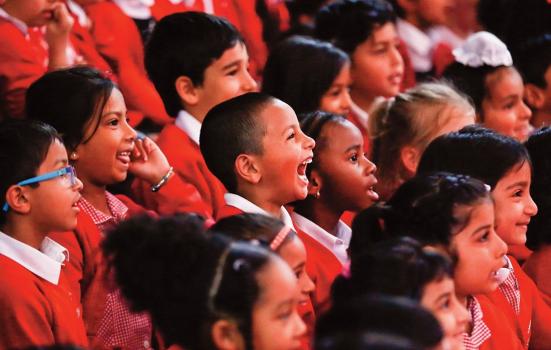Vital Spark is a national initiative aiming to create more inclusive and diverse performances for children and young people. Tara Lopez tells the story.

As a child of mixed race, I remember my mum handing ethnicity data forms back to my school, saying, “There’s no box for my daughter so I won’t be completing this.” Back then, ‘mixed’ wasn’t an option. Today the country’s attitudes to ethnicity have evolved, not least because mixed ethnicities are among the fastest-growing and youngest minority groups.
Delving deeper into these areas made us aware of our gaps and encouraged us to seek advice externally
But what of disability in society? Attitudes are gradually shifting and technology has brought new ways for D/deaf and disabled children to engage with culture. But there still hasn't been enough progress, and the representation of D/deaf and disabled artists on stage and behind the scenes still falls short.
A recent study by Scope found the following: “Negative attitudes and misperceptions can hold disabled people back in all areas of life… But this research shows that familiarity with disability and disabled people is key to breaking down barriers.”
While society continues to evolve, progress in the cultural sector has been slow and inconsistent. There are some great examples of companies creating diverse and inclusive work for children, but we are a long way off being truly representative.
Since 2003, The Spark Arts for Children has been working in Leicester, one of England’s most diverse and youngest cities. While the Spark Festival and year-round projects have been successful in reaching and making an impact in the communities that need it most, we are aware that productions and projects representing these communities are few and far between.
A vital programme
Following years of support for diverse artists, as well as consultations and discussions across the sector, we have recently been awarded funding to address this gap nationally. Vital Spark was born - a programme with ambitious targets. Over four years we aim to welcome 24 artists into the children’s sector through a development programme, support eight new ideas to be tested through an ideas fund, and take two new productions to audiences across the country. We’ll also support the creativity of BAME, D/deaf and disabled artists, galvanise the sector into action and elevate the discussion as a whole.
In order to achieve these ambitions, we need to be flexible, responsive and collaborative. This isn’t a gap that we can fill alone and that’s not our intention, but we have an opportunity to instigate lasting change and we must take full advantage of it.
Hard questions
Ensuring Vital Spark does what it sets out to do has started with some hard questions. We’ve had to look at ourselves as an organisation. What are our own diversity gaps? What is the power dynamic between us and the artists?
As we unpicked these questions, some key themes emerged, one of which was the language we used in communications. Targeting artists across the country with varying experience of the children’s sector meant speaking to people who didn’t know us. Therefore, the tweet or email they read needed to convey that we’re coming from a place of authenticity – and we’re learning too. It needed to show that Vital Spark is not an add-on but is embedded in the organisation. It needed to make clear both the breadth and specificity of who we were looking for and why.
Delving deeper into these areas made us aware of our gaps and encouraged us to seek advice externally. We established an advisory group to offer insight and experience beyond our reach. These critical friends are challenging us to look at things differently and supporting us through any difficulties that arise.
Further opportunities
As we met with artists, spreading news of the opportunities on offer, the power dynamic also became clearer. We are encouraging artists to make work for children, and yet we only have a small number of opportunities available each year. The response to the call-out was strong, showing there is an appetite for more makers to create the work.
But what of those unsuccessful in this process? What’s our responsibility to them and how do we avoid being part of the stop-start economy?
Part of my role has been to interrogate this relationship and find ways beyond the funded programme to continue to support these artists. Forging partnerships with other organisations will be a crucial part of this as we’ll be able to signpost the artists to other opportunities and collaborate to do more with our funding.
A fresh perspective
We know we’re not doing anything ground-breaking, but we are trying to approach this with a fresh perspective. Finding ways to look both in and out, striking the right balance between thought and action, and remaining open in order to be responsive.
We now have six artists across the country who are in the early stages of their Vital Spark development and commissions. These artists demonstrate diversity at its best, with a range of artforms, experience, background and ambitions. Together they will allow us to evolve our thinking as an organisation in order to better serve our audiences.
The introduction of this group will have a direct impact on us as we work towards The Spark Festival 2020, a space reimagined with our audience and product at the centre.
Tara Lopez is Creative Producer at The Spark Arts.
https://thesparkarts.co.uk/
Follow the Vital Spark blog.




